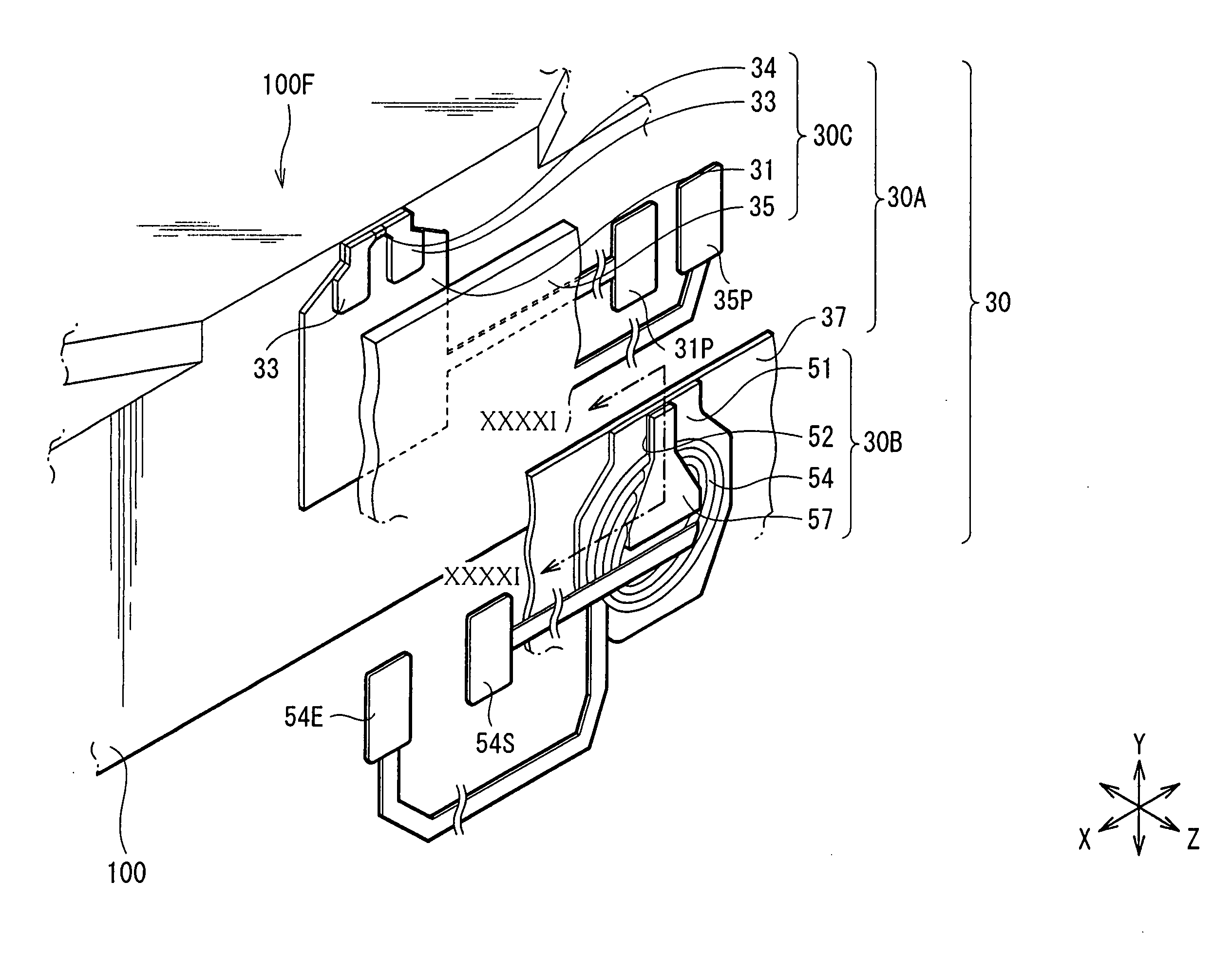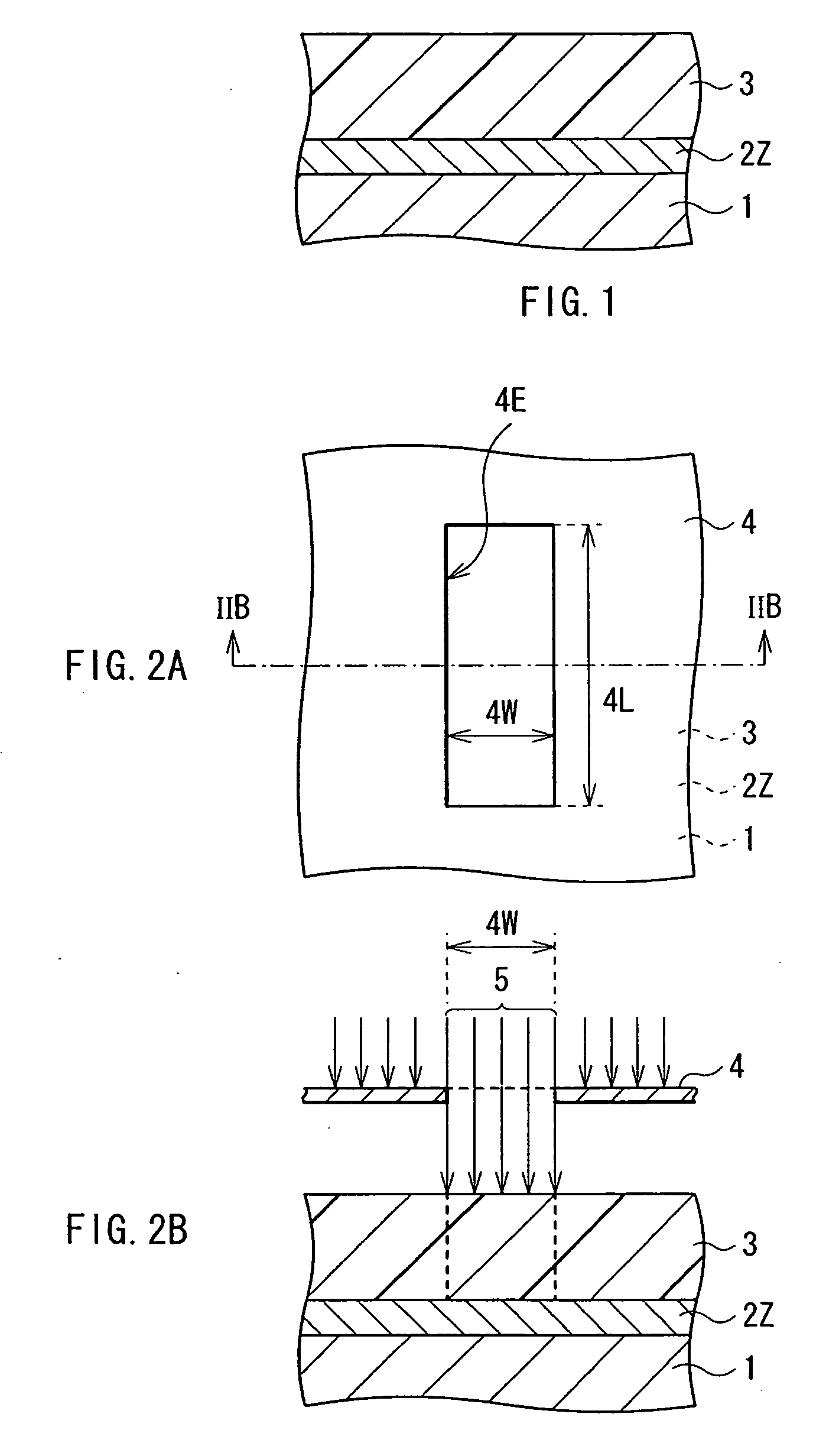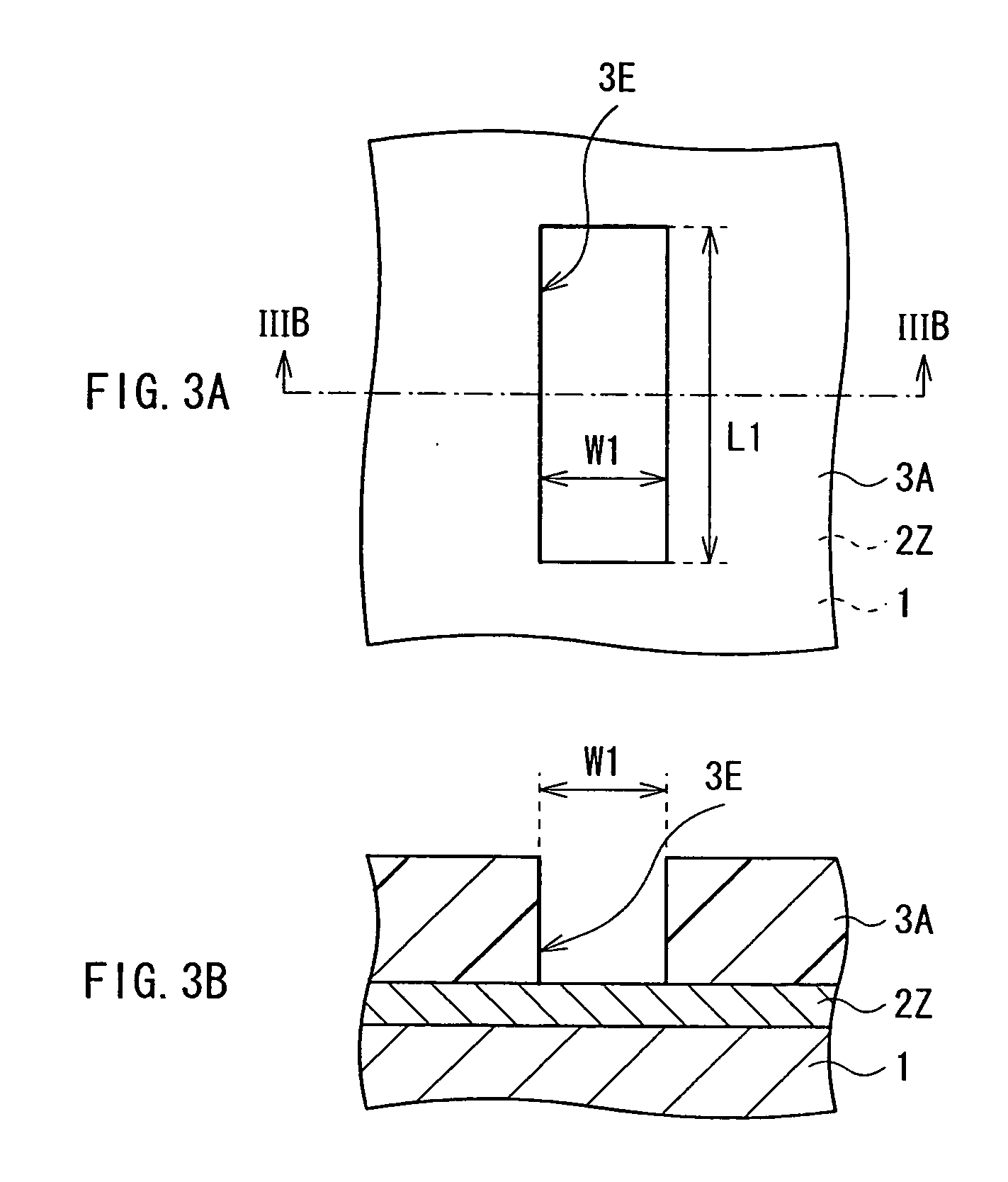Method of forming mask pattern, method of forming thin film pattern and method of forming magnetoresistive element
a magnetoresistive element and mask pattern technology, applied in the field of mask pattern, can solve the problems of difficult removal of unnecessary seed layer, and achieve the effects of high structural stability, improved precision, and improved sensitivity
- Summary
- Abstract
- Description
- Claims
- Application Information
AI Technical Summary
Benefits of technology
Problems solved by technology
Method used
Image
Examples
first embodiment
[0064]First, a method of forming a thin film pattern according to a first embodiment of the present invention will be described with reference to FIGS. 1 to 10. Here, a method of forming a mask pattern of the present invention will also be described together since it can be realized by the method of forming a thin film pattern, in which the mask pattern is used. The same is true for all the other embodiments.
[0065]The method of forming a thin film pattern of the present embodiment includes a step of forming a mask pattern, a first-half step of patterning to form a thin film pattern (a first thin film pattern), and a latter-half step of patterning to form another thin film pattern (second thin film pattern) disposed on both sides of the first thin film pattern, with the first thin film pattern in between. The step of forming a mask pattern includes steps of forming a photoresist pattern having an opening therein on a thin film to become the first thin film pattern, which is provided ...
second embodiment
[0080]Hereinbelow will be described the method of forming a thin film pattern as a second embodiment of the present invention with reference to FIGS. 11 to 20.
[0081]In the first embodiment, the inorganic film 7 is formed as one unit as shown in FIG. 5 using the photoresist pattern 3A with the groove-shaped opening 3E as shown in FIG. 3. Then, as shown in FIG. 7, the long and slender-shaped inorganic mask pattern 7Z is formed. On the other hand, in the present embodiment, a photoresist pattern is formed to have an opening configured of a groove-shaped opening and a pair of other openings connected to the both ends of the groove-shaped opening, and an inorganic film is formed by stacking a first inorganic layer and a second inorganic layer in order, then the photoresist pattern is removed, thereby obtaining an inorganic mask pattern. After this, a portion of the first inorganic layer included in the inorganic mask pattern, corresponding to the groove-shaped opening, is dissolved and r...
third embodiment
[0095]Subsequently, a method of forming a thin film pattern according to a third embodiment of the present invention will be described hereinbelow with reference to FIGS. 22 to 31.
[0096]In the first embodiment, the inorganic film 7 is formed as one unit as shown in FIG. 5 using the photoresist pattern 3A with the groove-shaped opening 3E provided on the thin film 2Z as shown in FIG. 3. Then, as shown in FIG. 7, the long and slender inorganic mask pattern 7Z is formed. In the second embodiment, the photoresist pattern 9A is formed to have the pair of other openings 9E2 connected to the both ends of the groove-shaped opening 9E1 on the thin film 2Z as shown in FIG. 12, the inorganic film is formed by stacking the inorganic layer 10 and the inorganic layer 11 in order as shown in FIGS. 13 and 14, then the photoresist pattern 9A is removed, thereby obtaining the inorganic mask pattern 11Y. After this, as shown in FIG. 17, the area 10A, which is included in the inorganic layer 10 constit...
PUM
| Property | Measurement | Unit |
|---|---|---|
| Width | aaaaa | aaaaa |
| Dimension | aaaaa | aaaaa |
| Magnetism | aaaaa | aaaaa |
Abstract
Description
Claims
Application Information
 Login to View More
Login to View More - R&D
- Intellectual Property
- Life Sciences
- Materials
- Tech Scout
- Unparalleled Data Quality
- Higher Quality Content
- 60% Fewer Hallucinations
Browse by: Latest US Patents, China's latest patents, Technical Efficacy Thesaurus, Application Domain, Technology Topic, Popular Technical Reports.
© 2025 PatSnap. All rights reserved.Legal|Privacy policy|Modern Slavery Act Transparency Statement|Sitemap|About US| Contact US: help@patsnap.com



